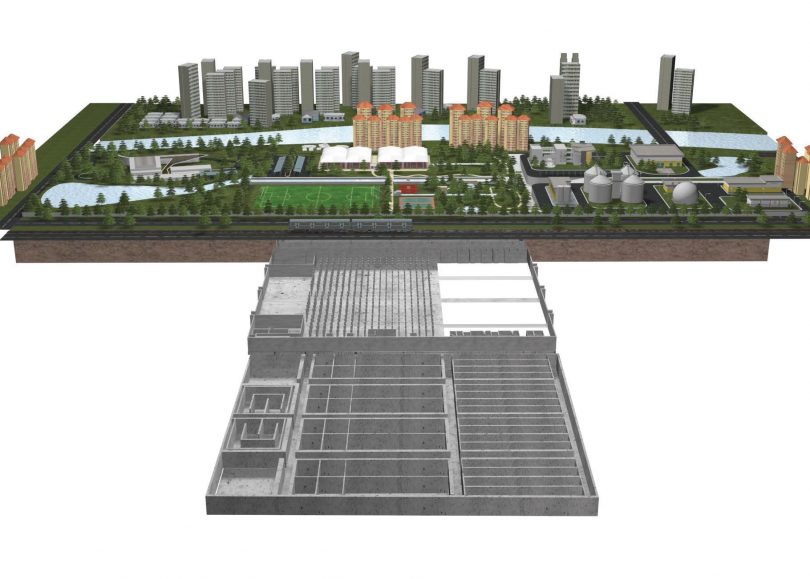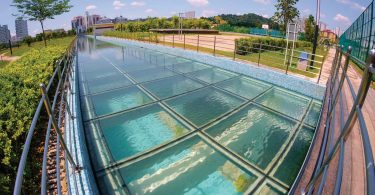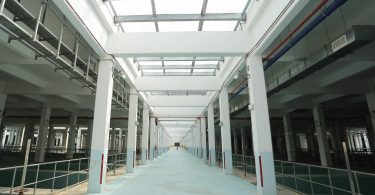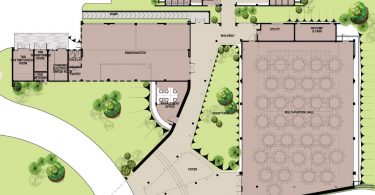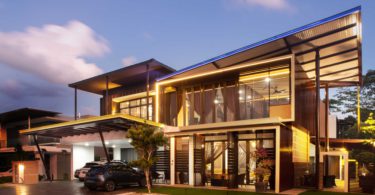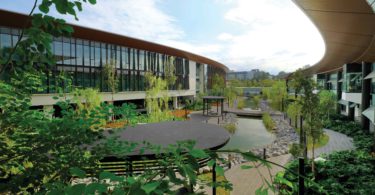For more than 50 years, Pantai Dalam—one of the oldest settlements in Kuala Lumpur—has been known as the home of the Pantai Sewage Treatment Plant, an open-air oxidation pond that served as one of the most critical sewage treatment facilities in Kuala Lumpur. The unfortunate by-products of this service are the water pollution and unpleasant odour that emanate from the facility.
Under the 10th Malaysia Plan, the RM983 million Pantai 2 Sewage Treatment Plant (P2STP) was built to replace the original facility. This new state-of-the-art mechanised underground regional sewage treatment plant has proved to be a model for innovation in concept, design, engineering and construction—setting new standards for sewage treatment in Malaysia and transforming its surrounding environment.
FROM POND TO PARK
The Pantai catchment area covers 6,700 hectares in the central and south-western parts of Kuala Lumpur—including Bandar Baru Sentul, Sentul Raya, the Bukit Kiara central business district, Taman Botani and parts of Petaling Jaya—with a 320,000-cubic-metre per day capacity to serve a population equivalent to 1.423 million.
The mega sewage treatment plant—the largest in Asia Pacific—is constructed on the same site as the previous oxidation ponds and comprises two main parts: the sludge treatment facility above ground and the fully underground multi-layered sewage treatment facility that goes 17 metres deep.
At the ground level, there is also a 12-hectare public park—Pantai Eco Park—complete with waterways and abundant greenery, as well as recreational facilities, such as jogging track, playground, courts for futsal, tennis, sepak takraw, volleyball and badminton, community centre, cafeteria, surau and covered parking.
TREATMENT PROCESS
The plant is designed for Standard A effluent discharge quality as prescribed in the Environmental Quality (Sewage) Regulations 2009.
This state-of-the-art plant uses advanced anaerobic-anoxic-oxic (A2O) liquid treatment process—using microorganisms to break down sewage material—which results in better quality effluents, more efficient and effective removal of contaminants such as nitrogen and phosphorus from wastewater, more stable operating system, minimal production of sludge, and a smaller footprint.
With centralisation of sewage treatment at P2STP, as many as 140 small plants that produce substandard effluent can be closed, reducing pollution into the Klang River. Odour scrubber systems are provided at this plant to treat odorous gases from the sewage and sludge treatment.
GREEN TECHNOLOGY
The P2STP is built with sustainability in mind, capitalising on renewable resources for energy and water to reduce wastage and pollution. It has a Green Building Index (GBI) silver rating.
A bio-gas generator converts the methane gases produced during the sludge treatment process to generate up to 700 kilowatts of auxiliary power. Together with solar panels installed atop the parking lots, it supplies 10 to 15 per cent of the plant’s power needs.
Rainwater harvesting produces about 80 cubic metres of water a day for toilet flushing and landscaping, while a multi-stage filtration and reverse osmosis membrane system recycles bio-effluent into 2,460 cubic metres of treated water daily for plant operations.
The aquatic skylight over the underground passageway provides natural lighting for the space below with energy savings of up to 30 kilowatts a day, while the wastewater source heat pump facilitates heat exchange with effluent to generate a cooling load of 1,200 kilowatts, which drives the air-conditioning system for the administration building and community centre.
SIX YEARS IN THE MAKING
Beginning in July 2011, the project was finally completed after more than six years. Works included the construction of a temporary treatment facility, the underground and above-ground structures, and the installation of equipment, as well as operations and maintenance. The community centre and sports facilities were among the final structures to be constructed.
The project was not without its challenges from surrounding residents, site constraints and technical difficulties. Temporary treatment facilities were provided to deal with continuous incoming sewage flow while underground excavation works were ongoing. During water rationing periods, filtered rainwater was used for concrete mixing, while extensive pumping and plugging of leakage points were required during excavation works due to the high water table. Working with a Chinese contractor also meant dealing with different reference standards, working culture and practices.
PROJECT DATA
Project Name: Pantai 2 Sewage Treatment Plant
Location: Jalan Kampung Pasir 1, Pantai Dalam, Kuala Lumpur, Malaysia
Completion Date: July 2017
Site Area: 17 hectares
Owner: Ministry of Energy, Green Technology & Water (KeTTHA)
Implementing Agency: Sewerage Services Department (JPP)
Project Management Consultant: Kumpulan Ikhtisas Projek (M) Sdn Bhd–MECIP (M) Sdn Bhd joint venture
Architecture Firm: Kuek Wee Chien Architect (KWCA)
Design & Build Contractor: BEWG (M) Sdn Bhd (novated from Beijing Enterprises Water Group Ltd, China)
Civil & Structural Engineer: Engineering and Environmental Consultants Sdn Bhd (EEC Sdn Bhd)
Mechanical & Electrical Engineer: SMHB Sdn Bhd
Quantity Surveyor: Perunding NFL Sdn Bhd
Landscape Architect: PTA Design Sdn Bhd
Green Building Consultant: Prudenergy Sdn Bhd
National Concessionaire: Indah Water Konsortium Sdn Bhd (IWK)
Images: JPP; IWK; KWCA

 Hong Kong
Hong Kong Singapore
Singapore Indonesia
Indonesia Tiếng Việt
Tiếng Việt ประเทศไทย
ประเทศไทย



